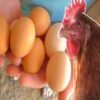- このトピックは空です。
- 投稿者投稿
- 3月 30, 2025 9:03 am #613855
The brooder house is a fundamental part of poultry farming, especially in the early stages of chick development.
As the demand for sustainable farming practices grows, the need for energy-efficient and biosecure brooder house designs has become increasingly important.
An innovative approach to brooder house design can not only improve energy efficiency, reducing operational costs, but also enhance biosecurity, ensuring that the chicks are protected from diseases and pathogens.
In this article, we will explore various design innovations that contribute to both energy efficiency and biosecurity in brooder houses.
1. Energy-Efficient Insulation And Heating Systems
Energy efficiency is a critical aspect of brooder house design, especially when it comes to maintaining the necessary temperatures for chick growth. Advanced insulation materials, such as insulated panels or reflective barriers, can significantly reduce the amount of energy needed to heat the brooder house.
These materials prevent heat loss and maintain a stable internal environment, reducing the reliance on traditional heating systems. In addition, integrating energy-efficient heating technologies, such as infrared heating lamps, radiant floor heating, or geothermal heating systems, can provide a consistent and cost-effective method of maintaining ideal temperatures for chicks.
By minimizing energy consumption, these systems help reduce both costs and environmental impact while maintaining a comfortable environment for the chicks.
2. Passive Ventilation And Natural Lighting
A key aspect of designing an energy-efficient brooder house is incorporating passive ventilation and natural lighting systems. Passive ventilation systems, which use the natural flow of air to regulate temperature and humidity, can significantly reduce the need for mechanical fans and air conditioning.
By designing the brooder house with appropriate roof vents, windows, and wall openings, airflow can be optimized to ensure a consistent supply of fresh air while removing excess moisture and gases. Additionally, the use of natural lighting through strategically placed windows or skylights can reduce the need for artificial lighting, further conserving energy.
Combining these systems not only reduces energy consumption but also creates a more comfortable and healthier environment for the chicks.
3. Secure Entry And Exit Systems for Biosecurity
Biosecurity is a top priority in any brooder house design. Innovative entry and exit systems can play a vital role in preventing the introduction of pathogens and diseases into the brooder house. Double-door entryways or airlocks are commonly used to minimize the risk of contamination by ensuring that no harmful organisms can be carried in by personnel or equipment.
The use of footbaths and hand sanitizing stations at all entry points further enhances biosecurity by limiting the transfer of pathogens from external sources. Additionally, restricted access zones within the brooder house, such as separate areas for feed storage or egg collection, help to isolate potential sources of contamination.
These biosecurity measures contribute to a safer environment for chicks, promoting healthy growth and reducing the risk of disease outbreaks.
4. Automated Climate Control Systems
Automated climate control systems are another key innovation in brooder house design that improves both energy efficiency and biosecurity. These systems monitor and adjust factors such as temperature, humidity, and ventilation in real-time, ensuring that the environmental conditions remain optimal for chick health and development.
For instance, thermostats, humidity sensors, and automated fans work together to regulate the internal conditions without the need for manual intervention.
By continuously adjusting the environment to meet the specific needs of the chicks, these systems not only enhance energy efficiency by avoiding energy waste but also reduce human error, leading to more consistent biosecurity practices. Automated climate control systems ensure that the brooder house remains both energy-efficient and safe for the chicks.
5. Integrated Waste Management And Sanitation Systems
An often overlooked aspect of brooder house design is the integration of effective waste management and sanitation systems. Innovative waste management systems, such as automatic manure removal systems or composting facilities, help maintain a clean environment, reducing the risk of disease and contamination.
Proper waste management also reduces the build-up of harmful ammonia levels, which can negatively impact chick health.
In addition, incorporating sanitation stations for cleaning equipment and tools, as well as automated systems for disinfecting surfaces, contributes to maintaining high levels of biosecurity. These integrated systems not only keep the brooder house clean but also prevent the spread of diseases, ensuring a healthier environment for the chicks.
Innovative brooder house designs that focus on enhanced energy efficiency and biosecurity are essential for modern poultry farming. By incorporating energy-efficient insulation, passive ventilation, natural lighting, automated climate control, and secure entry systems, farmers can reduce energy consumption, lower costs, and improve the overall health and safety of the chicks.
Additionally, integrating waste management and sanitation systems further strengthens biosecurity measures, preventing the spread of disease and ensuring optimal conditions for chick growth.
As the poultry industry moves towards more sustainable and biosecure practices, these design innovations offer a practical and cost-effective approach to improving brooder house operations, benefiting both farmers and the animals they raise.
Read Also: Optimizing Brooder House Environmental Controls for Chick Health and Growth
- 投稿者投稿
- このトピックに返信するにはログインが必要です。





